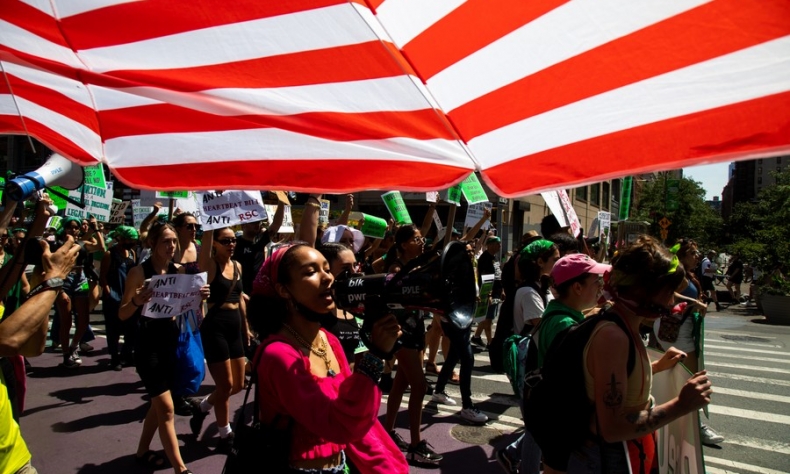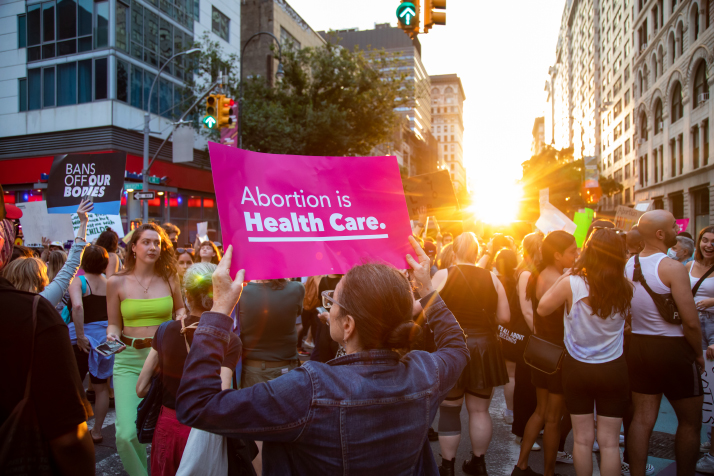Pre-Handmaid’s Tale

The Supreme Court, which is supposed to uphold and protect citizens’ rights, looks to be more of a factionalized arena where human rights and women’s wombs can be sacrificed. So what’s next?
May we compare real life today in the United States, a long self-proclaimed beacon of democracy and individual freedom, to Margaret Atwood’s dystopian novel, The Handmaid’s Tale, throughout which women are attempting to regain their freedom while having next-to-no agency over their own reproductive rights?
On June 24, the U.S. Supreme Court overturned the 1973 decision on Roe v. Wade, which established a person’s constitutional right to an abortion, as well as the 1992 decision Casey v. Planned Parenthood, which added another layer of protection by barring states from imposing an “undue burden” on someone seeking an abortion. Individual states will now have the power to ban the procedure.
In the fallout of the ruling, at least 26 states are poised to ban or further restrict access to safe and legal abortions, according to U.S. research organization the Guttmacher Institute.
Already, a 10-year-old rape victim in Ohio has been denied an abortion as the state does not allow it once fetal cardiac activity is detected in the sixth week of pregnancy. Ohio is one of 13 states that have anti-abortion “trigger laws” in place that came into effect as soon as Roe v. Wade was overturned. The child was thus forced to travel to neighboring Indiana where the procedure has yet to be banned. Given the physical and psychological dangers of childhood pregnancy, the case exposes Ohio’s double standard in attempting to protect the rights of an unborn child at the expense of a living one.

Many U.S. politicians seem insensible to the implications of the Supreme Court’s decision, keen to continue pursuing partisan interests. President Joe Biden described the decision as a “tragic error,” one which he instantly used to compel voters to head to the polls at the midterm elections. At the same time, former President Donald Trump praised it as “the biggest win for life in a generation,” noting that it was “only made possible” by his actions as president.
In recent years, the U.S. has become increasingly divided. Many social issues fall along partisan lines. In general, many Democrats favor legal abortions, gun control and bans on religion in the public sphere, while the majority of Republicans stand with religion and gun ownership and want abortions banned or strictly regulated.
Fighting for abortion rights has been a part of the American women’s movement since the 1960s, and is key to securing gender equality and equal political and economic participation. In practice, the Supreme Court’s decision, which drastically increases the financial resources necessary to secure an abortion, sets these goals back decades by targeting poor, minority and rural women—those who can least afford abortions and who can least afford an unplanned pregnancy.
Some will have to source abortion pills from unregulated pharmacies. Others will have to seek the help of illegal abortion clinics, even in cases of rape and incest, or be faced with no choice but to shoulder the huge mental, physical, economic and social cost of pregnancy. In many states, a pregnant person who finds themselves in a medical emergency will now be at the mercy of doctors and lawyers to determine if the necessary procedure is legal. Physicians are also being placed in a precarious situation, faced with new restrictions on their ability to provide care. As an extreme case, pregnant cancer patients may die in the U.S. as doctors fear treating them could count as an illegal abortion, reported U.S. financial and business news website Business Insider on July 5, citing experts.
In response to the U.S. Supreme Court’s decision, UN High Commissioner for Human Rights, Michelle Bachelet said access to safe, legal and effective abortion is firmly rooted in international human rights law and is at the core of women and girls’ autonomy, and ability to make their own choices about their bodies and lives, free of discrimination, violence and coercion.
The Supreme Court, which is supposed to uphold and protect citizens’ rights, looks to be more of a factionalized arena where human rights and women’s wombs can be sacrificed. So what’s next?
 Facebook
Facebook
 Twitter
Twitter
 Linkedin
Linkedin
 Google +
Google +










